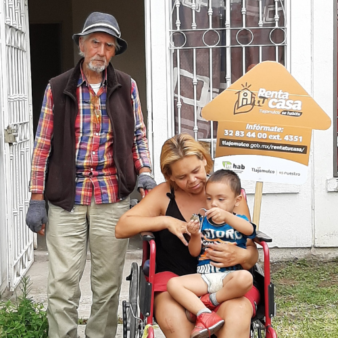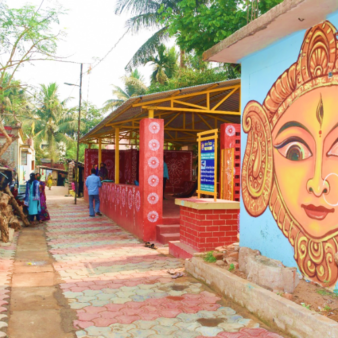The Rio Grande Valley (RGV), in the southernmost tip of Texas, is one of the poorest areas in the United States. Many people living in the area are trapped in a cycle of chronic financial instability, suffering from the effects of extreme poverty and a lack of good-quality, affordable housing.
In May 2019, a financial profile of potential homeowners living in RGV’s rural areas and colonias (former migrant farmer settlements outside the city limits that often lack basic services), revealed that six out of 10 held less than $400 in savings, had a poor credit rating, and an average net worth of -$22,213. One-third survived on fixed incomes either from Social Security or disability payments and received an average monthly payment of $983.
Despite an overwhelming need for affordable housing in RGV, subsidy funding for low-income families in the Brownsville area has been drastically cut from $10.8 million in 2013 to $3.8 million in 2017. Many housing and community development organisations are forced to turn away would-be homeowners or maintain long waiting lists.
MiCASiTA aims to change this by developing an affordable homeownership model that allows low-income families to design and build a home that can grow over the years, according to their needs and financial capabilities. The project was established by buildingcommunityWORKSHOP, a Dallas-based non-profit community design centre, and ‘come dream. come build’ (cdcb), a Brownsville-based non‐profit community housing development organisation. MiCASiTA’s phased construction approach was adapted from a disaster reconstruction project, known as RAPIDO, which was also developed by cdcb, Texas Housers, and buildingcommunityWORKSHOP.
An initial tailored mortgage supports residents to purchase a new core housing structure. Extra rooms and features can be added to this unit over time as the family’s financial situation improves and/or as their needs change. Phasing construction in this way reduces the size of subsidy needed for low-income families to start their homes, while allowing them to invest long-term in planning their future and building towards their dream house. Corresponding financial education plan helps homeowners pay off housing loans, improve their credit scores, and build financial equity.
As of June 2021, the project’s R&D home is under construction with formal plans being prepared for State approval. The project is influenced strongly by the 30+ post-disaster reconstruction homes the team has constructed across Texas. The homes will be earthquake and hurricane-safe and cost 15% less than average market prices.
The project in practice
Residents in RGV typically build their own homes in a piecemeal fashion, usually starting with a dilapidated structure or trailer home, which they later add to as finances and materials become available. The principles of building over time, saving money, avoiding large debts, and meeting long-term goals are entrenched in the culture of the region. MiCASiTA integrates these familiar practices into a more structurally sound and economically efficient model.
The project aims to help residents in rural areas of persistent poverty nationally, the majority of whom live well below poverty levels, earning less than 60% of the area-wide median family income (AMFI) (<$17,357 USD). Most potential homebuyers in RGV, particularly those living in colonias, already own land, so the project does not cover associated costs for land purchase.
To qualify to build a MiCASiTA home, residents must first engage with cdcb housing advisors who help them create an action plan to increase their credit score, reduce their current debt, and save for the deposit and closing costs. The financial security services are free. Once they meet these criteria, the homebuyers work with project architects to design a blueprint based on the size of home they envision for themselves in the long term and a cdcb lender will find the most suitable loan and or/grant product. Finance is structured to produce low monthly repayments by utilising lower rates, longer terms and deferred loan amounts.
The core housing units (and subsequent additions) are prefabricated offsite, then transported for assembly on the homebuyer’s land. Residents choose one of three standardised core units around which their house can grow. This initial unit is about 56m² and contains a kitchen, bathroom, dining room, and one bedroom. Construction time for each home takes no longer than 90 days.
Over time, as finances allow, residents can add extra rooms and amenities to the core structure, such as front porches and additional bedrooms. The flexibility of the phased construction approach addresses the problem of poor quality, one-size-fits-all housing models that cannot accommodate a family’s changing needs and size requirements. MiCASiTA plans to increase its client choice through additional design options.
The phased construction costs of the project are broken down by year. The loan amount for the core house in year one is $62,105. This rises to $63,583 in year two with the addition of a front porch, and to $78,060 in year three with a second bedroom. The addition of a third bedroom in year four would take the total loan amount to $90,172.
cdcb housing advisors provide ongoing financial advice to homeowners and financial check-ins are provided up to two years after the house is built to ensure loan repayments and other credit obligations are made on time.
Funding
In August 2016, buildingcommunityWORKSHOP and cdcb published a concept paper outlining how they would redesign the RAPIDO disaster reconstruction project and use Federal Housing Finance Agency Duty to Serve rules, introduced after the 2008 financial crisis, to fund mortgages for the MiCASiTA project.
From 2016-2018, they used their own finances to continue research and development on the project, focusing on house design, marketing, and the creation of a small loan pool with a mortgage takeout channel.
In 2019, buildingcommunityWORKSHOP and cdcb were awarded a small grant to pilot the MiCASiTA model by Freddie Mac, a federally backed home mortgage company. Both the Texas State Affordable Housing Corporation and the Cameron County Housing Finance Agency contributed $1.25 million to the loan pool.
In 2020, MiCASiTA won a $2.5 million Housing Affordability Breakthrough Challenge. This two-year award from Enterprise and Wells Fargo will help scale up the project beyond RGV to other regions experiencing persistent poverty in the United States.
Impact
MiCASiTA’s flexible finance model and unit design enables low-income families to build the kind of homes they would not otherwise be able to afford. Phased construction helps families avoid the accrual of large debts and poor credit scores, improving their long-term economic outlook.
The client-led design process gives low-income communities choice over the kind of homes they want to build for themselves and their families – an option not usually offered to this socio-economic group. Accessible design features ensure the needs of elderly and disabled people are met, while the inclusion of a front porch reflects cultural practices by providing a space for gatherings.
Ongoing financial planning consultations and check-ins help build homeowners’ money-management skills and improve their financial resilience. The build-up of equity in a house over time can change the legacy of families living in communities where generational poverty is deeply entrenched.
The MiCASiTA homes are based on the RAPIDO model, which have key environmental resilient elements integrated into their designs. For example, the core of the RAPIDO houses is built as a safe house with extra rigid shear walls and connections to protect against earthquake damage.
Construction materials are locally sourced, while lighting and plumbing fixtures designed to lower energy and water usage are installed to reduce homeowners’ running costs.
Insulation is installed above the required minimum standards because it reduces heat transfer inside the home in RGV’s hot climate. The houses are also windstorm-certified to protect the homes from hurricane damage.
Current MiCASiTA home designs are being reviewed to qualify them for the Enterprise Green Communities Certification to ensure environmentally-friendly and sustainable operation.
Expansion and transfer
The MiCASiTA model is designed to be easily transferable to other regions with persistent poverty. buildingcommunityWORKSHOP and cdcb hope to achieve this aim using Housing Affordability Breakthrough Challenge funds to first expand the project to marginalised Native American communities. As it expands, MiCASiTA will develop a tailored construction, design, lending, and transportation plan for each market.
To scale up, the project team has begun the process of partner identification with the help of their Community Technical Assistance Providers (CTAP) team. The CTAP team represents 20 towns and cities across the country, and is made up of non-profit housing providers, private sector builders/designers, government employees, consultants, and private individuals. Some will partner with each other to scale up MiCASiTA, while others will help identify the suitable partners for the region. buildingcommunityWORKSHOP and cdcb will help in the initial stages of these partner projects but hope to step back once MiCASiTA is working well and has a strong source of revenue for the partner and local area.
Low-income, rural communities are not usually afforded the opportunity to build their dream homes. With this project, people are able to invest long-term in adaptable homes that grow with both their personal and financial goals. This long-term investment offers families better housing and financial security in poverty-persistent regions and has the potential to transform affordable housing provision in other challenged communities across the United States.


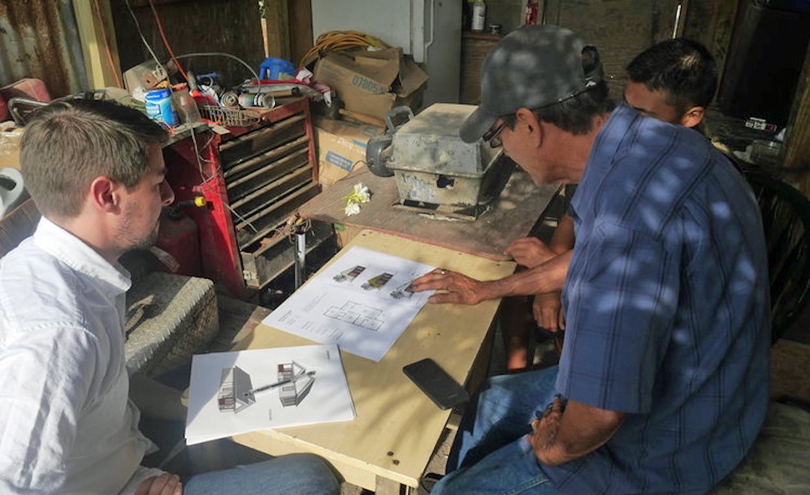
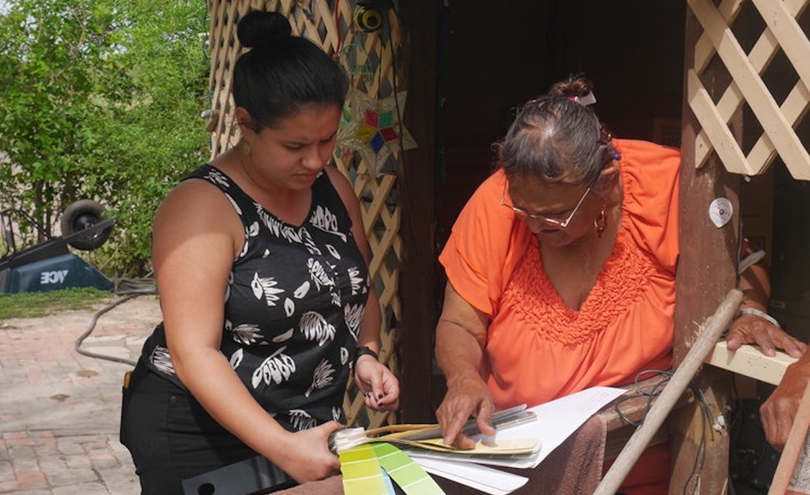
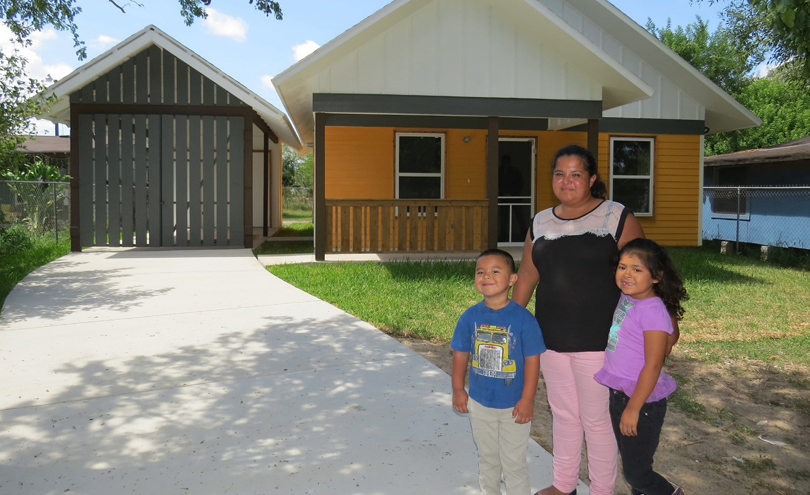
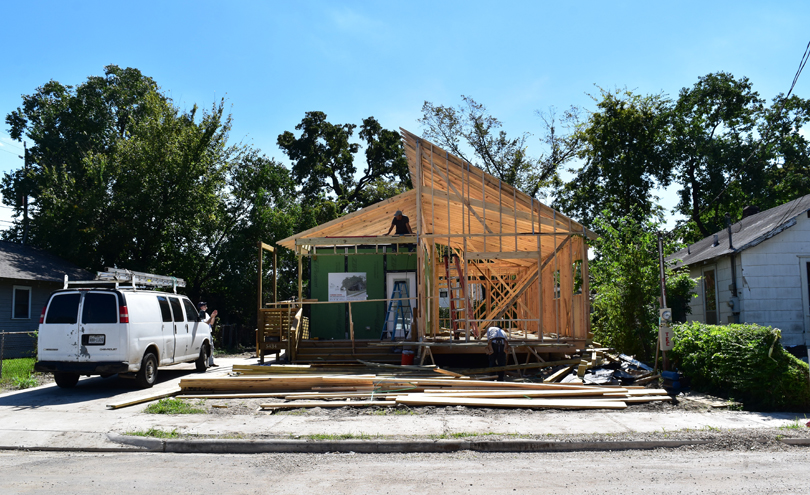
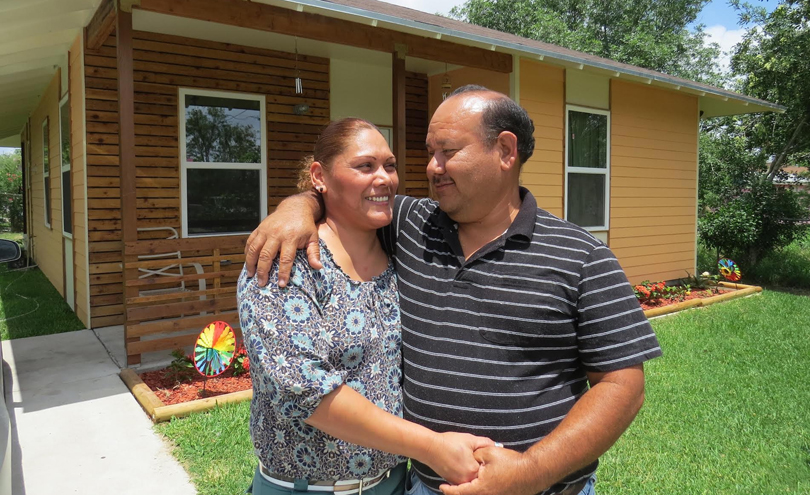

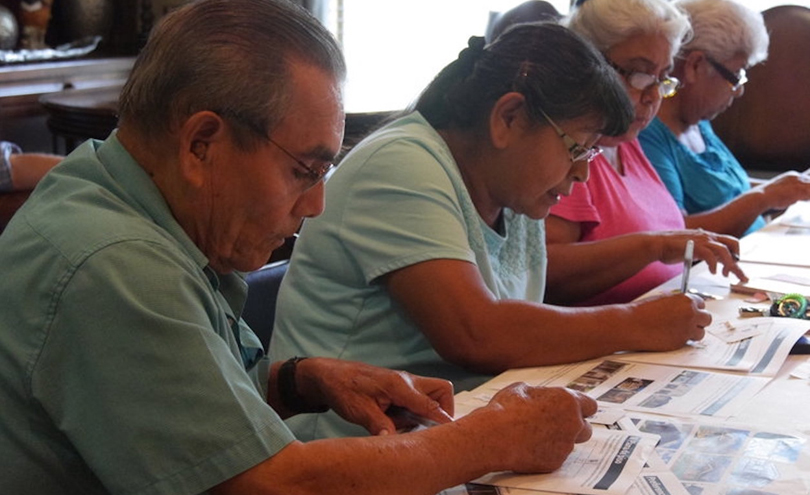
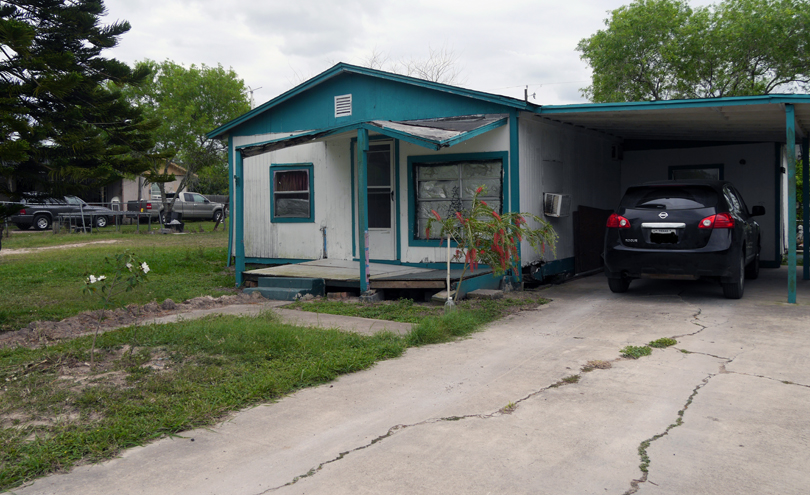

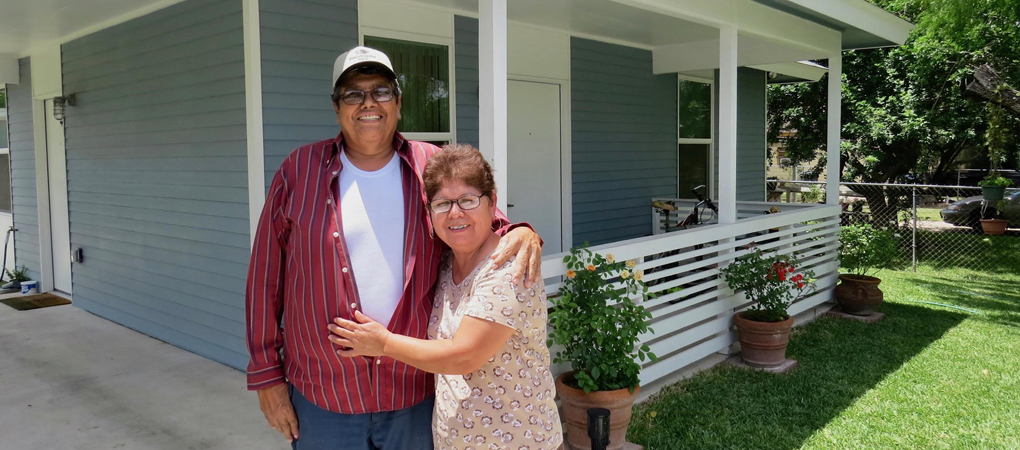
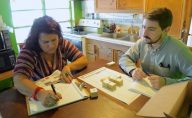
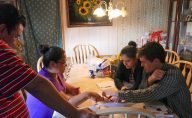
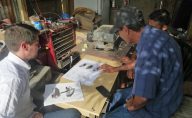
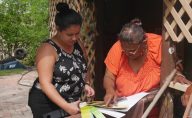
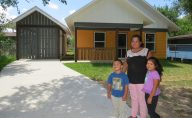
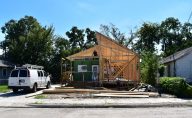
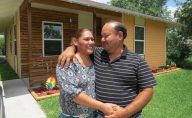
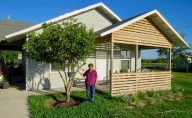
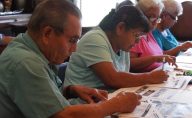
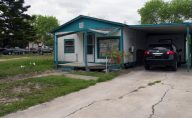
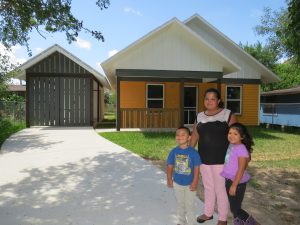 Maria Gaona, a mother living in the Rio Grande Valley of Texas, purchased a home from cdcb under the grow home model that evolved into
Maria Gaona, a mother living in the Rio Grande Valley of Texas, purchased a home from cdcb under the grow home model that evolved into 